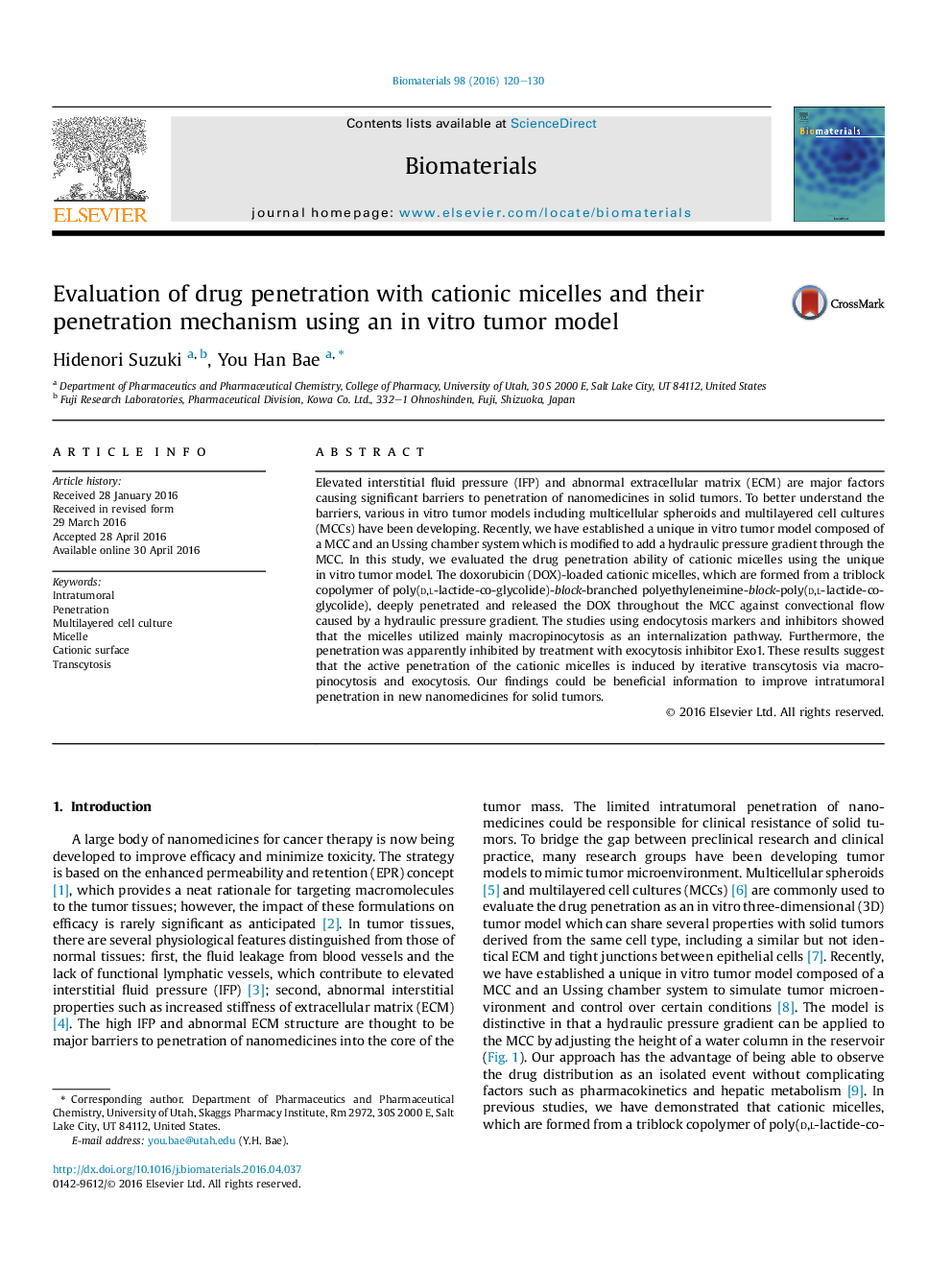| Article ID | Journal | Published Year | Pages | File Type |
|---|---|---|---|---|
| 6484967 | Biomaterials | 2016 | 11 Pages |
Abstract
Elevated interstitial fluid pressure (IFP) and abnormal extracellular matrix (ECM) are major factors causing significant barriers to penetration of nanomedicines in solid tumors. To better understand the barriers, various in vitro tumor models including multicellular spheroids and multilayered cell cultures (MCCs) have been developing. Recently, we have established a unique in vitro tumor model composed of a MCC and an Ussing chamber system which is modified to add a hydraulic pressure gradient through the MCC. In this study, we evaluated the drug penetration ability of cationic micelles using the unique in vitro tumor model. The doxorubicin (DOX)-loaded cationic micelles, which are formed from a triblock copolymer of poly(d,l-lactide-co-glycolide)-block-branched polyethyleneimine-block-poly(d,l-lactide-co-glycolide), deeply penetrated and released the DOX throughout the MCC against convectional flow caused by a hydraulic pressure gradient. The studies using endocytosis markers and inhibitors showed that the micelles utilized mainly macropinocytosis as an internalization pathway. Furthermore, the penetration was apparently inhibited by treatment with exocytosis inhibitor Exo1. These results suggest that the active penetration of the cationic micelles is induced by iterative transcytosis via macropinocytosis and exocytosis. Our findings could be beneficial information to improve intratumoral penetration in new nanomedicines for solid tumors.
Related Topics
Physical Sciences and Engineering
Chemical Engineering
Bioengineering
Authors
Hidenori Suzuki, You Han Bae,
